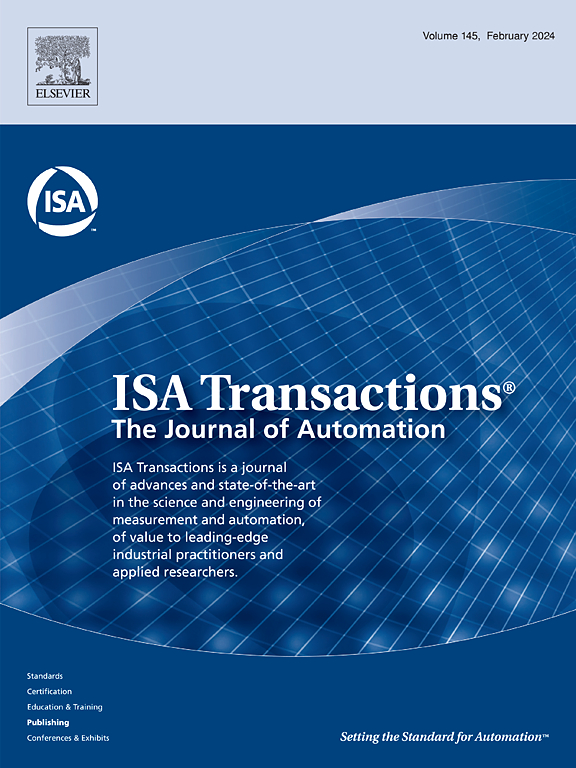Model predictive control of nonlinear dynamical systems based on long sequence stable Koopman network
IF 6.5
2区 计算机科学
Q1 AUTOMATION & CONTROL SYSTEMS
引用次数: 0
Abstract
In recent years, the Koopman method has found numerous applications in the field of nonlinear control due to its ability to map nonlinear states into high-dimensional spaces, thereby transforming nonlinear control problems into linear or bilinear problems. However, Koopman methods based on deep learning suffer from slow convergence, and the Koopman coefficients obtained through iterative processes cannot guarantee long-term prediction stability in the high-dimensional mapped space. To address these issues, we propose a Stable Deep Koopman Network with Model Predictive Control (SDKN-MPC) method for nonlinear control. The SDKN-MPC method utilizes the Stable Koopman Solver Algorithm to solve for a stable Koopman operator. It incorporates neural network training for embedding functions, with both training processes interleaved until convergence is achieved towards a unified stable solution. Subsequently, Model Predictive Control (MPC) is employed to control the high-dimensional linear system mapped through the Koopman operator, yielding high-dimensional desired inputs. These inputs undergo further processing through an auxiliary network to obtain the actual predictive control inputs. The proposed method is subjected to long-term predictive performance testing across multiple typical nonlinear control tasks and is compared with existing deep learning-based approaches. The results demonstrate that our method can extract more effective nonlinear features, converges rapidly, and exhibits superior predictive performance compared to existing methods.
基于长序列稳定库普曼网络的非线性动力系统模型预测控制。
近年来,由于能够将非线性状态映射到高维空间,从而将非线性控制问题转化为线性或双线性问题,Koopman方法在非线性控制领域得到了广泛的应用。然而,基于深度学习的Koopman方法收敛速度慢,通过迭代过程获得的Koopman系数不能保证高维映射空间中长期预测的稳定性。为了解决这些问题,我们提出了一种具有模型预测控制(SDKN-MPC)的稳定深度库普曼网络的非线性控制方法。SDKN-MPC方法利用稳定库普曼求解算法求解稳定库普曼算子。它结合了神经网络对嵌入函数的训练,两个训练过程相互交错,直到收敛到一个统一的稳定解。随后,采用模型预测控制(MPC)控制通过库普曼算子映射的高维线性系统,产生高维期望输入。这些输入通过辅助网络进行进一步处理,以获得实际的预测控制输入。提出的方法进行了跨多个典型非线性控制任务的长期预测性能测试,并与现有的基于深度学习的方法进行了比较。结果表明,与现有方法相比,该方法可以提取更有效的非线性特征,收敛速度快,具有更好的预测性能。
本文章由计算机程序翻译,如有差异,请以英文原文为准。
求助全文
约1分钟内获得全文
求助全文
来源期刊

ISA transactions
工程技术-工程:综合
CiteScore
11.70
自引率
12.30%
发文量
824
审稿时长
4.4 months
期刊介绍:
ISA Transactions serves as a platform for showcasing advancements in measurement and automation, catering to both industrial practitioners and applied researchers. It covers a wide array of topics within measurement, including sensors, signal processing, data analysis, and fault detection, supported by techniques such as artificial intelligence and communication systems. Automation topics encompass control strategies, modelling, system reliability, and maintenance, alongside optimization and human-machine interaction. The journal targets research and development professionals in control systems, process instrumentation, and automation from academia and industry.
 求助内容:
求助内容: 应助结果提醒方式:
应助结果提醒方式:


